Studio Drift creates elegant installations and interactive sculptures that explore the relationship between nature, human and technology. The creative duo currently has a solo show at the new, spectacular Amos Rex art museum in Helsinki. During my visit there, I was vexed to learn that everybody but me knew the work of Studio Drift.
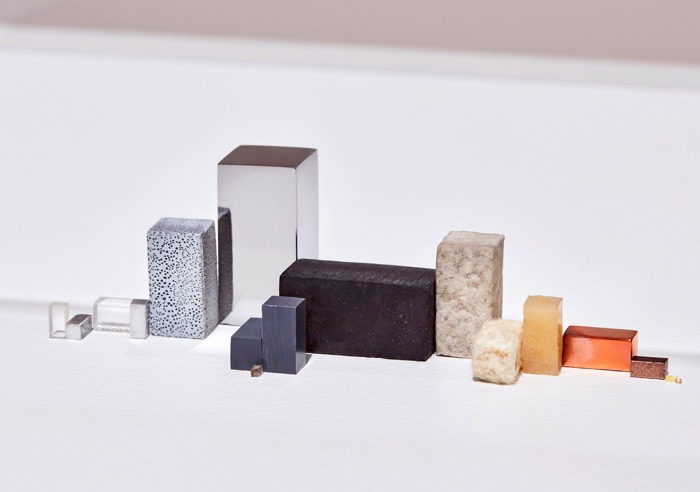
Studio Drift, Light bulb, from the series Materialism
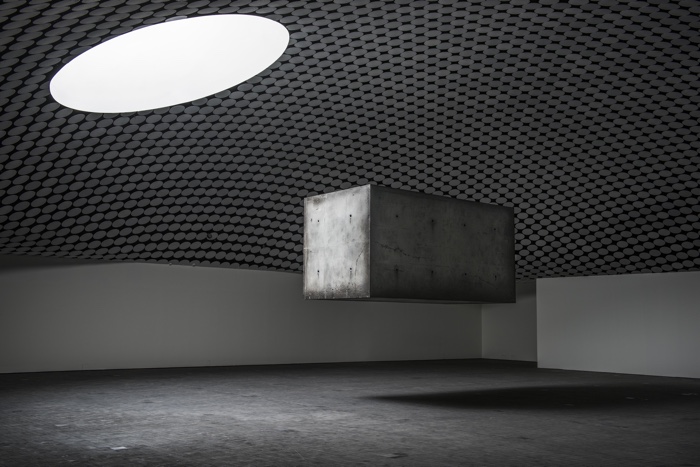
Studio Drift, Drifter, 2019. Photo: Stella Ojala for Amos Rex
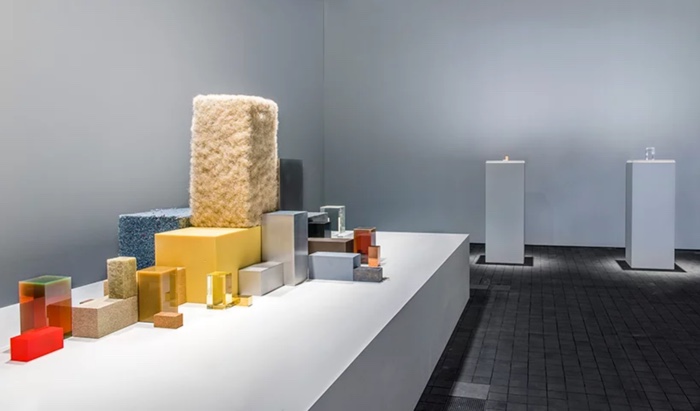
Studio Drift, VW Beetle 1980, from the series Materialism. Photo by Stella Ojala for Amos Rex
A huge block of concrete floating above visitors’ heads, a light sculpture made of dandelion seeds and LED-lights, etc. Studio Drift excels at experimenting with technology. Materialism, the work in the show that impressed me the most, was decidedly less technologically sophisticated but it nevertheless tells a powerful story about how little we know about the objects we surround ourselves with.
For this series, the designers took consumer goods such as a vacuum cleaner, a classic Nokia phone, a Volkswagen Beetle, a pencil, a PET bottle, a light bulb and a bicycle and literally reduced their complexity to the raw materials they are made of.
Still, Materialism is an affecting exercise in dismantling consumer culture, in leaving aside functions and in ennobling the resources we extract from the Earth at great human and environmental costs.
Studio Drift, Materialism
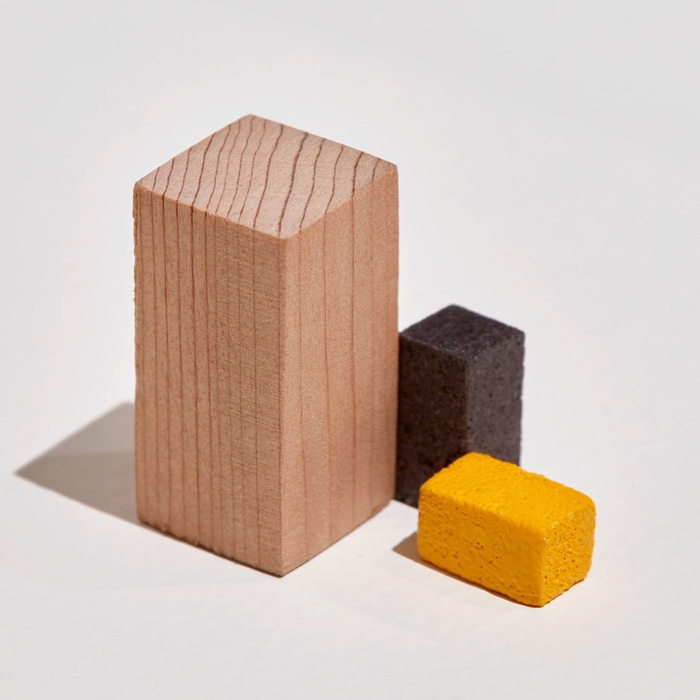
Studio Drift, Pencil, from the series Materialism
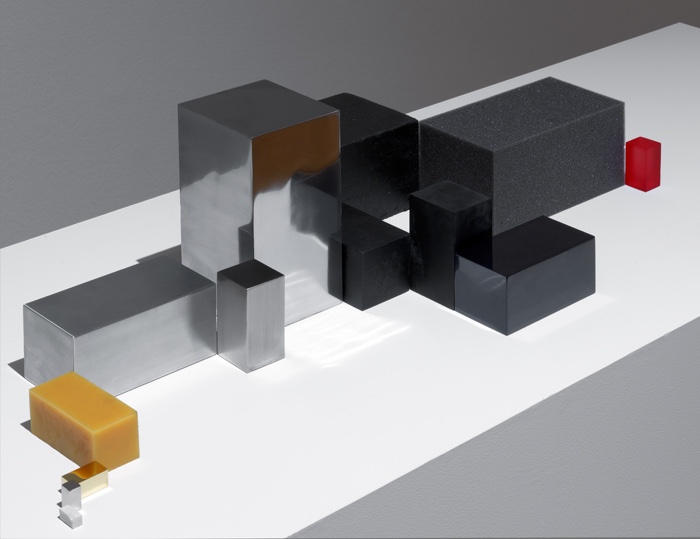
Studio Drift, Gazelle Bicycle 2005, from the series Materialism. Photograph by Gert Jan van Rooij
Each big or small object in their Materialism series becomes unrecognizable. A bicycle is converted to blocks of rubber, polyurethane, steel, aluminum, lacquer paint and other materials. A pencil becomes wood, graphite and a bit of paint. Sometimes the inside of objects is rather surprising. Who knew that a Volkswagen Beetle from the 1980s contained horsehair and cork, for example?
Studio Drift writes that “If humankind could somehow perceive this connection to materials, to our collective consumption and the earth it impoverishes, it would be a leap in our social evolution, in building an awareness that we must somehow become better stewards of our future.” I disagree with that confident statement. I think we’ve been warned time and time again that our reckless looting of the earth is becoming “unsustainable”. Newspapers, documentaries and scientists have spent the past few years telling the Western world that we need to consume less, that resources are not infinite, etc. And yet, we’re still here. Students are protesting in the streets and politicians pretend younger generations will get tired of asking for a future we’ve stolen from them.
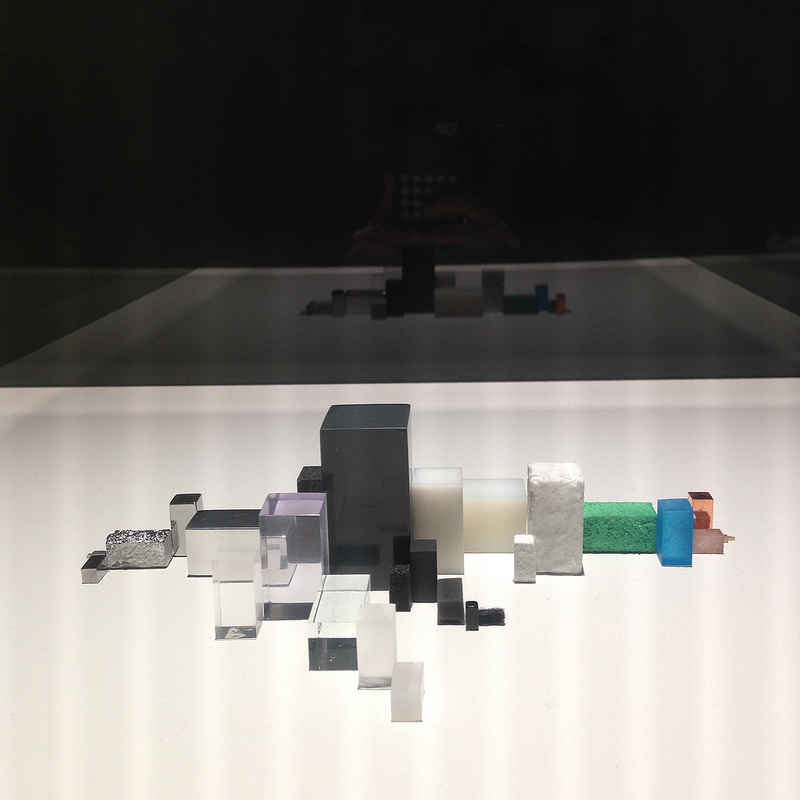
Studio Drift, Nokia 3210, from the series Materialism. Installation view at Amos Rex
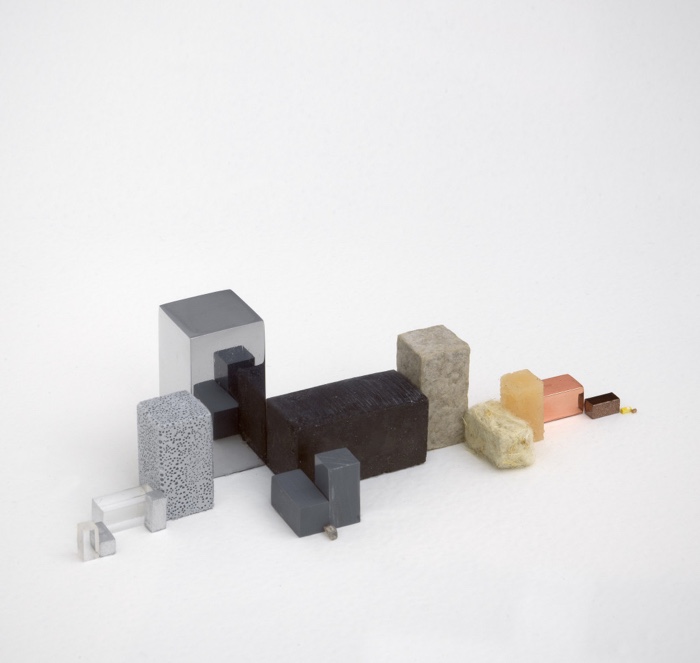
Studio Drift, Dandelight, from the series Materialism. Photograph by Gert Jan van Rooij
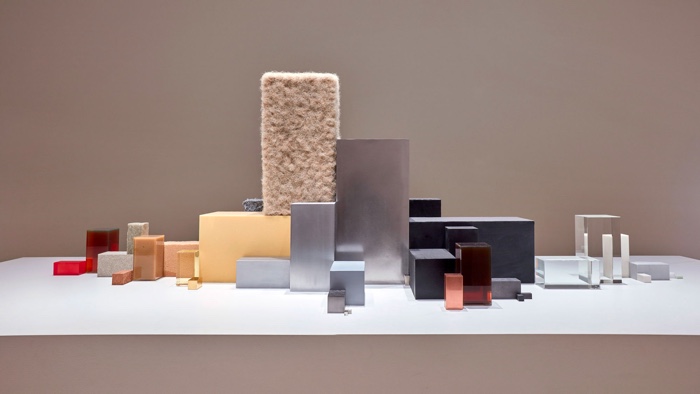
Studio Drift, VW Beetle 1980, from the series Materialism
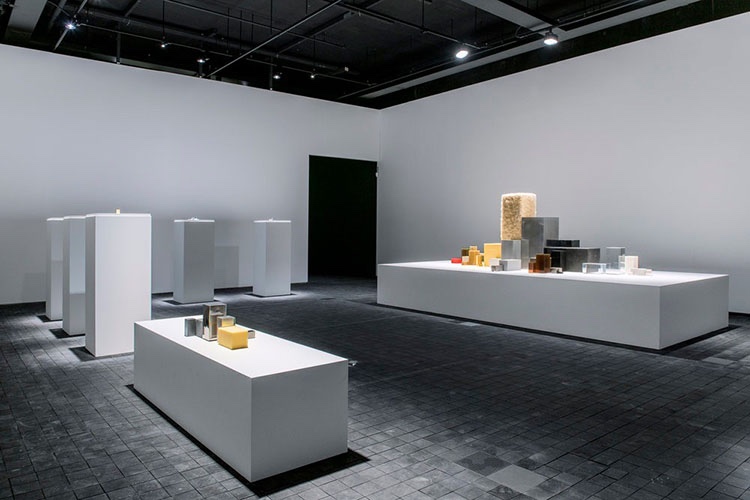
Studio Drift, Materialism at Amos Rex. Photo by Stella Ojala
I’ll end with a few images of the Amos Rex art museum. Its programme of exhibitions that mixes the ultra contemporary with modern artists (right now they have a big show dedicated to René Magritte) is almost as impressive as its architecture. JKMM Architects excavated the ground beneath an ex-bus station, hid the museum down there and created skylights that bubble up through the surface of the ground as domes, turning the square into a playground for skaters and children. The space also has the usual museum shop and an exquisitely renovated Art Deco cinema called Bio Rex.
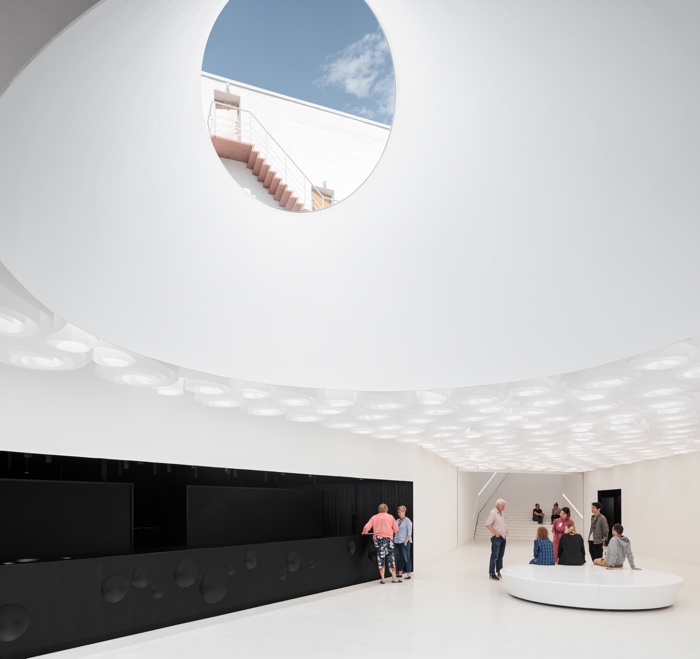
Amos Rex Art Museum, Helsinki. Photo: Tuomas Uusheimo / Amos Rex, 2018
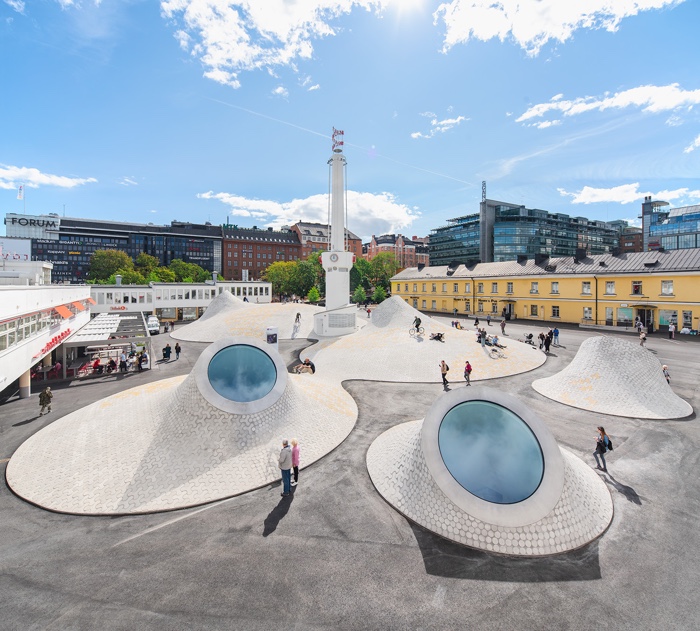
Amos Rex Art Museum, Helsinki. Photo: Mika Huisman / Amos Rex
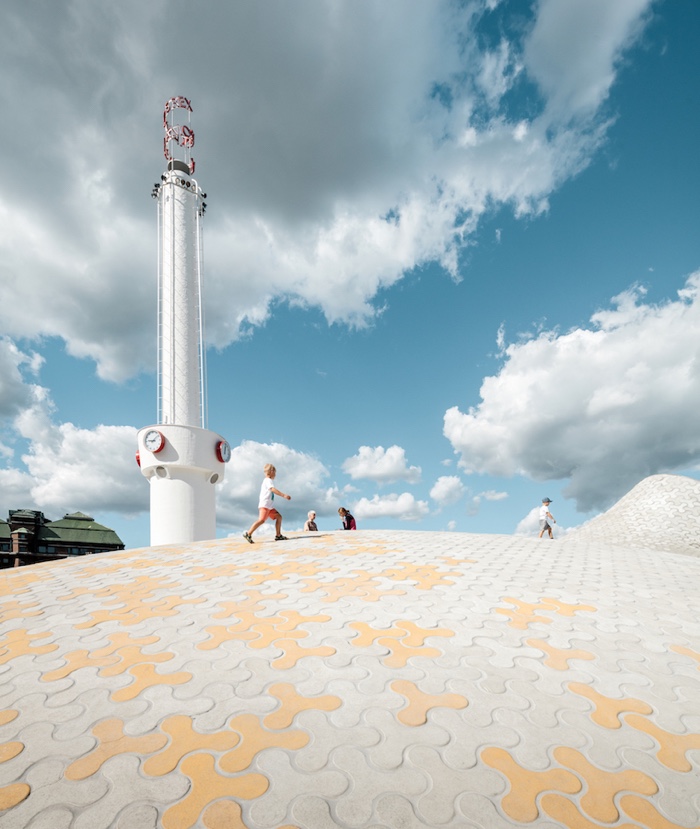
Amos Rex Art Museum, Helsinki. Photo: Mika Huisman / Amos Rex
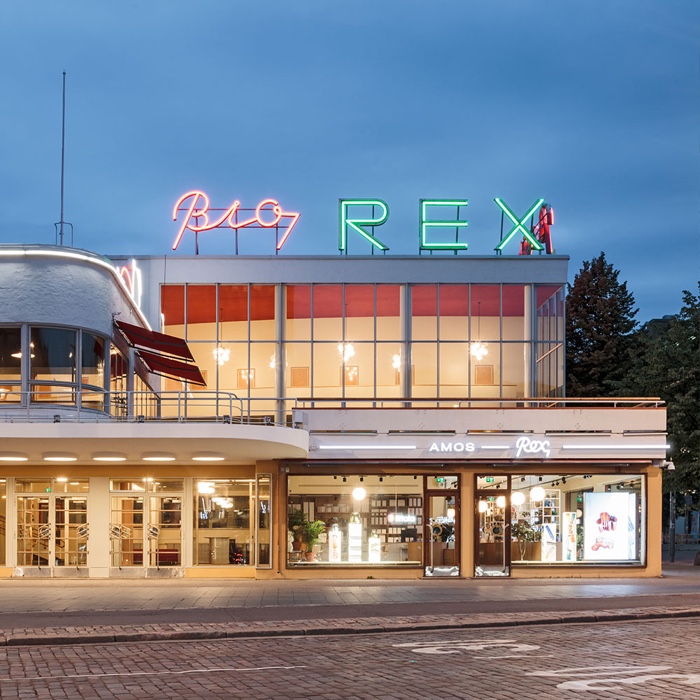
Amos Rex, Bio Rex, Helsinki. Photo: Tuomas Uusheimo / Amos Rex, 2018
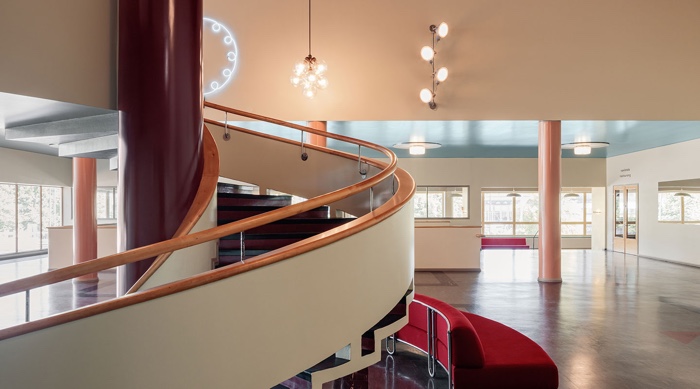
Amos Rex, Bio Rex (interior), Helsinki
Elemental, Studio Drift’s solo show, remains open at Amos Rex in Helsinki until 19 May 2019 alongside the first show in Finland dedicated to René Magritte.
